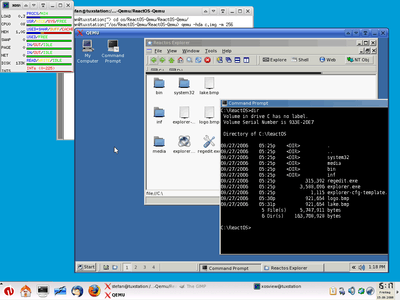QEMU

ReactOS running inside QEMU on Linux
QEMU is an emulator and virtualization machine that allows you to run a complete operating system as just another task on your desktop. It can be very useful for trying out different operating systems, testing software, and running applications that won't run on your desktop's native platform.
QEMU runs on x86 systems running Linux, Microsoft Windows, and some UNIX platforms, and can host target systems from a range of different microprocessors as detailed on the QEMU website.
QEMU has the advantage of being able to run either as a pure emulator or as a native virtual machine (on x86 / x86-64 hardware).
Contents
- QEMU Hello World: Installing QEMU and getting it up and running
- Installing QEMU
- Creating and Manipulating Images
- Networking
- Using the Monitor
- Invocation
- Setting up guest systems
- Emulated devices
- Host's devices
- USB
- User Interface
- Debugging with QEMU
External links
- QEMU website
- KVM, the kernel-based virtual machine for QEMU
- The wikibook QEMU and KVM (GNU Free Documentation License 1.2)
- archlinux QEMU wiki
Contributors
- Webaware
- Ismael Luceno
This article is issued from Wikibooks. The text is licensed under Creative Commons - Attribution - Sharealike. Additional terms may apply for the media files.